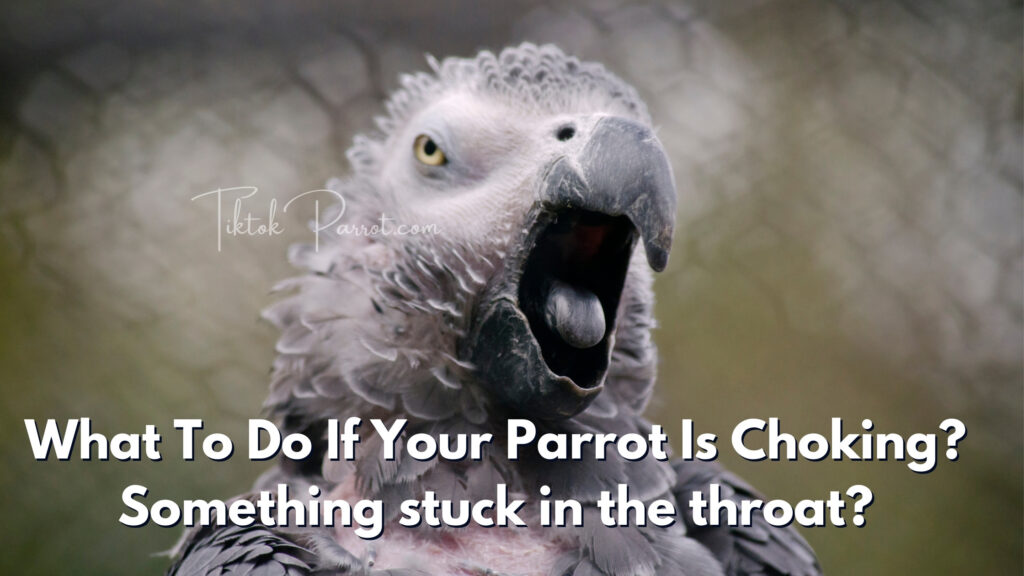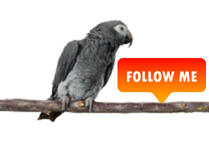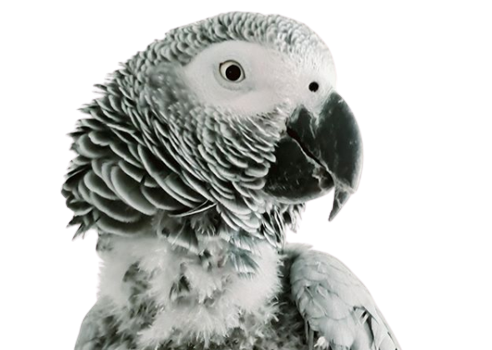If you suspect that your parrot is choking and has something stuck in its throat, it’s important to act quickly to try to remove the object and help your bird breathe. Here in this blog I would write some steps you can take to help your lovely bird but lets first know what choking is about:
Table of Contents

Choking is a blockage of the upper airway by food or other objects, which prevents a parrot from breathing effectively. Choking in birds occurs when an object becomes stuck in the bird’s throat or airway, blocking the flow of air. This can be a serious and potentially life-threatening situation, as birds rely on their ability to breathe to survive.
Symptoms of choking in birds may include coughing, gagging, difficulty breathing, and an inability to swallow. The bird may also appear distressed or lethargic. This sometimes leads them into biting, chewing on, or swallowing objects they shouldn’t. Although parrots are skilled at not choking, since they normally swallow food whole, it does happen.
If you suspect that your bird is choking, it’s important to act quickly to try to remove the object and help your bird breathe. If you are unable to remove the object or if the bird is showing signs of distress, it’s important to seek medical attention as soon as possible. Your veterinarian will be able to assess the situation and provide treatment as needed.
Helping A Parrot Choking On Food
If you suspect that your parrot is choking and has something stuck in its throat, it’s important to act quickly to try to remove the object and help your bird breathe. Here are some steps you can take:
Stay calm: It’s important to try to remain calm and not panic, as this can make the situation worse.
Look in the mouth: Carefully try to look in the parrot’s mouth to see if you can see the object that is stuck.
Remove the object: If the object is visible and within reach, gently try to remove it with your fingers or a pair of tweezers. Be careful not to push the object further down the throat or cause any injury to the bird.
Perform the Heimlich maneuver: If the object is not visible and you are unable to remove it, you may need to perform the Heimlich maneuver. To do this, gently grasp the bird around the waist and give several quick thrusts inward and upward.
Seek medical attention: If you are unable to remove the object or if the bird is showing signs of distress, it’s important to seek medical attention as soon as possible. Your veterinarian will be able to assess the situation and provide treatment as needed.
If your parrot is choking and you are unable to remove the object, it’s important to seek medical attention as soon as possible. Time is of the essence in these situations, and your veterinarian will be able to provide the necessary treatment to help your bird.
Parrot Choking On Water
If you think that your parrot is choking on water, it’s important to act quickly and calmly. Here are some steps you can take:
Remove the water source: If the parrot is drinking from a water bottle or dish, remove it from their reach.
Gently lift the parrot’s head: If the parrot is having trouble breathing, gently lift their head slightly to allow them to breathe more easily.
Check for blockages: Carefully look into the parrot’s mouth and throat to see if there is anything blocking their airway, such as a piece of food or a feather.
Perform the Heimlich maneuver: If the parrot is still choking and you are unable to remove the blockage, you may need to perform the Heimlich maneuver. To do this, stand behind the parrot and place your arms around their chest. Make a fist with one hand and place it just above the parrot’s navel. Grasp your fist with your other hand and give a quick, upward thrust. Repeat the maneuver if necessary.
Seek medical attention: If the parrot is still choking after trying the above steps, it’s important to seek medical attention as soon as possible. A veterinarian will be able to determine the best course of treatment for your parrot.
Remember, it’s always best to err on the side of caution when it comes to your parrot’s health. If you’re ever unsure of what to do, it’s always best to consult with a veterinarian or a qualified avian veterinarian.
Parrot Is Choking On Formula
When your bird consumes soft food, like formula, it’s not choking on the food. Baby parrots are choking on the water content. It may have eaten too fast and extracted some of the water in the mixture of formula.
That’s because the food content is positively kept soft to prevent choking. It can’t get stuck in the throat. Once the parrot begins coughing, muscles in its throat will develop and expand. This will splash the soft, gummy substance around and make it pass.
The only exclusion would be if you harshly overfed the parrot. Then the formula food would have nowhere to go, as the crop overfills. In this case, hope the parrot coughs it up to get a breath if not then immediately rush your parrot to the vet.
How To Tell If A Parrot Is Choking
There are several signs that a parrot may be choking:
Difficulty breathing: The parrot may be making labored or open-mouthed breathing sounds, or their chest may appear to be moving more rapidly than normal.
Coughing or gagging: The parrot may be coughing or gagging as they try to clear their airway.
Change in color: The parrot’s comb (the fleshy protrusion on top of their head) or face may turn a bluish or pale color, which can indicate that they are not getting enough oxygen.
Change in behavior: The parrot may become agitated or distressed, or they may stop eating or drinking.
If you notice any of these signs, it’s important to take action immediately to help the parrot. Gently lift their head, check for blockages in their mouth or throat, and consider performing the Heimlich maneuver if necessary. If the parrot is still choking after trying these steps, it’s important to seek medical attention as soon as possible.
How To Tell If A Parrot Is Choking To Death
If the parrot’s breathing route is completely blocked, it may be powerless of making any sound at all. In this case, the parrot will only be able to:
• Widen its neck and body
• Bend, its head
• Flutter its wings
• Appear highly anxious
For instance, extending its neck and body shows that the bird tries to clear out the object. It’s trying to widen out its throat to help the object to move.
If your parrot only does this for a few seconds, then stops, it may have cleared the blockage of its throat. Then it will cough for a few seconds or minutes and it will be fine.
If the parrot remains to extend its neck or stretches out many times and continues to choke. It needs urgent help.
It’s important to remember that parrots, like all animals, can experience health problems and emergencies, and it’s essential to seek medical attention as soon as possible if you suspect that your parrot may be in distress. If a parrot is choking to death, they will likely show several signs of distress, including:
Difficulty breathing: The parrot may be making labored or open-mouthed breathing sounds, or their chest may appear to be moving more rapidly than normal.
Change in color: The parrot’s comb (the fleshy protrusion on top of their head) or face may turn a bluish or pale color, which can indicate that they are not getting enough oxygen.
Change in behavior: The parrot may become agitated or distressed, or they may stop eating or drinking.
Loss of consciousness: The parrot may become unconscious or unresponsive.
If you notice any of these signs, it’s important to take action immediately to help the parrot. Gently lift their head, check for blockages in their mouth or throat, and consider performing the Heimlich maneuver if necessary.
If the parrot is still choking after trying these steps, it’s important to seek medical attention as soon as possible. Remember, it’s always best to err on the side of caution when it comes to your parrot’s health. If you’re ever unsure of what to do, it’s always best to consult with a veterinarian or a qualified avian veterinarian.
Things Parrots Choke On
There are many things that parrots can choke on, including:
Large pieces of food: Parrots may try to swallow food that is too large for them to handle, which can lead to choking.
Foreign objects: Parrots are known for their curious nature and may try to chew or swallow small objects that they come across, such as paper, plastic, or toys.
Feathers: Parrots may try to swallow their own feathers, or feathers from other birds, which can lead to choking.
Water: If a parrot drinks too much water too quickly, they may choke.
Medications: If a parrot is not given medications properly, they may choke on the pill or liquid.
It’s important to be mindful of these potential choking hazards and to take precautions to keep your parrot safe. If you notice that your parrot is choking on something, it’s important to act quickly and calmly to try to remove the object and to seek medical attention if necessary.
How to Prevent Choking in birds?
Preventing choking in birds can be difficult, as birds are naturally curious and may explore their environment by putting objects in their mouths. However, there are steps you can take to reduce the risk of choking, such as keeping small objects out of reach, avoiding giving your bird hazardous foods or objects, and providing a safe and appropriate environment for your bird to explore.
There are several steps you can take to reduce the risk of choking in your bird:
- Keep small objects out of reach: Birds are naturally curious and may explore their environment by putting objects in their mouths. To reduce the risk of choking, keep small objects such as beads, coins, and paper clips out of reach of your bird.
- Avoid giving your bird hazardous foods or objects: Some foods and objects can be dangerous for birds and may increase the risk of choking. These may include nuts with shells, hard fruits and vegetables, and large pieces of food. Be sure to cut food into small pieces and avoid giving your bird anything that could pose a choking hazard.
- Provide a safe and appropriate environment: Make sure that your bird has a safe and appropriate environment to explore. This may include providing bird-safe toys and perches, and avoiding placing your bird in areas with potential hazards such as open windows or hot surfaces.
- Supervise your bird: When your bird is out of its cage, make sure to supervise it to ensure that it is not putting any hazardous objects in its mouth.
By following these steps, you can help to reduce the risk of choking in your bird and keep it safe and healthy. If you suspect that your bird is choking, it’s important to act quickly and seek medical attention if needed.
If you found this blog helpful, It would be great if you could share it with your family and friends who might find it useful as well.
For more useful content about African Grey parrots, you can subscribe my site with your email to get notification upon publishing a new blog, the subscribe box you can see on the right side of this page. Also if you get an alert on your web browser while browsing my site, allow it and that will also give you an alert whenever I publish a new blog.
Check out my eBook “The Grey Area”
You might like reading this:
Types of African Grey Parrots
African Grey Parrot Price & Owning Cost
The Surprising Benefits of Owning an African Grey Parrot
African Grey Parrots as Pets, The Pros and Cons of Owning One
What To Do If Your Parrot Is Choking, something stuck in the throat?
Are African Grey Parrots Smarter Than Dogs?
Stay safe and much love !



